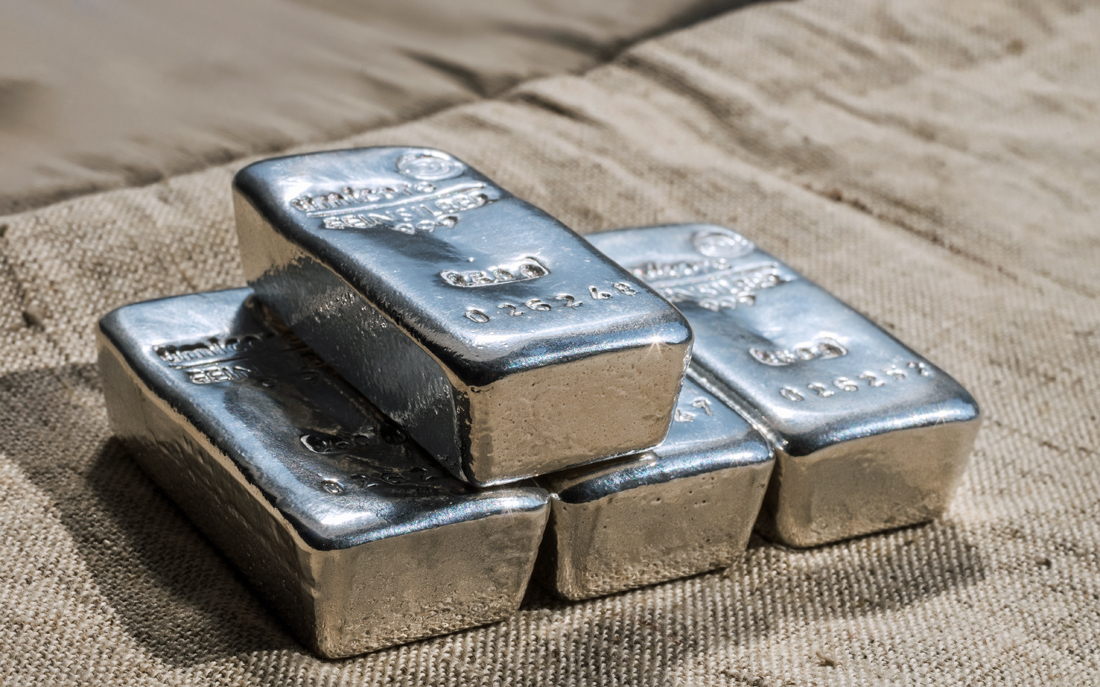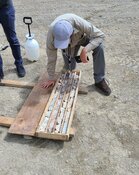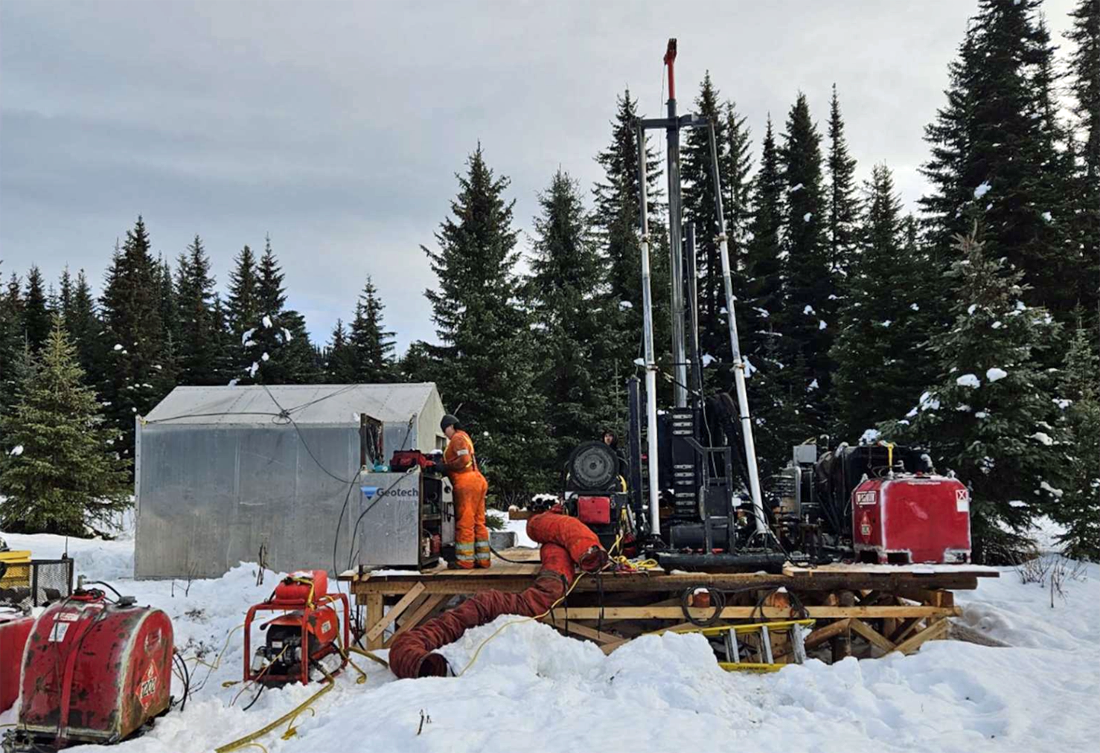Defense Metals Corp. (DEFN:TSX.V; DFMTF:OTCQB; 35D:FSE) announced that it has finished infrastructure and field data collection for its upcoming preliminary feasibility study (PFS) for the Wicheeda rare earth project in British Columbia.
The announcement comes just days after China upped the ante in its standoff with the West over rare earth elements (REEs) vital to defense and technology in the new clean economy. Just last week, China banned exports of technologies for processing REEs.
Highlights of Defense's exploration at Wicheeda in 2023 included 16 helicopter and track sonic overburden geotechnical drill holes totaling 225.5 meters, 20 excavated overburden geotechnical test pits totaling 76.8 meters, six diamond drill holes totaling 1,182 meters within the Wicheeda rare earth element (REE) deposit pit shell (inclusive of four open pit geochemical drill holes totaling 920 meters), and in-pit exploration holes totaling 262 meters.
"These multi-phase programs started in early summer and we now have all field geotechnical data in hand necessary for the completion of our PFS study, which we expect to be finished in Q2 2024," said Defense Metals Chief Executive Officer Craig Taylor.
The geotechnical work was completed by SRK Consulting (Canada) Inc. with support from APEX Geoscience Ltd., Defense said.
In addition to the fieldwork, the company also noted it has sent a 2,700-kilogram metallurgical sample from one of its drill cores to SGS Lakefield in Ontario for continued flotation and hydrometallurgical optimization test work.
The company also has initiated humidity cell test work on 17 samples and testing others for any possible metal leaching and acid rock drainage to support an environmental study.
Last month, the company announced it had finished Phase 2 of the drilling at Wicheeda.
"We . . . are encouraged that open pit geotechnical drilling has intersected significant widths of REE mineralized carbonatite within the western pit wall not previously known," Taylor said.
The Catalyst: China, Expanding Demand
China is responsible for two-thirds of current REE mine production and more than 85% of the refined output of REEs. Defense Metals looks to produce as much as 10% of the world's needs for the elements when it hits full production.
REEs are essential for the clean economy shift. They are used for purifying water, MRIs, fertilizers, weapons, scientific research, wind turbines, computers, and permanent magnet motors for EVs.
But it can take years to develop a mine into production and China has been escalating the faceoff, saying it will standardize its REE industry. It already has put restrictions on the exports of some of the substances. On Dec. 21, the communist country banned exporting technologies for processing REEs.
In October, Beijing announced that it would require permits for some graphite products used in electric vehicle (EV) batteries, to protect national security. Last summer, China instituted export restrictions on gallium and germanium, important to the semiconductor industry, after President Joe Biden had barred the sale of some advanced chips and chip-making technology to China.
"The country’s government can single-handedly halt the output of REEs," the Canadian Mining Report wrote of China after last week's REE announcement. "And it has just done exactly that."
The newsletter called Defense a "standout player" in this battle with China.
"We're in a cold war essentially on the trade front now," Jeff Green, a defense industry consultant and Washington lobbyist, told The Washington Post.
U.S. Secretary of Commerce Gina Raimondo warned recently, according to The Post, that "China has a head start, and that means we have to work a little harder and a little faster. They have the technology and sustained investment . . . to dominate the market for critical minerals, (which) can cause a great deal of pain very quickly."
 Streetwise Ownership Overview*
Streetwise Ownership Overview*
Defense Metals Corp. (DEFN:TSX.V; DFMTF:OTCQB; 35D:FSE)
The global market for the elements is expected to grow from US$2.6 billion in 2020 to US$5.5 billion in 2028, according to a report by Fortune Business Insights.
"The rising demand for consumer durables such as tablets, laptops, and smartphones (are some) of the factors driving the consumption of rare earth elements," the report said. "The demand for these elements in developing economies is estimated to expand rapidly."
Co. on a 'Positive Trajectory' Going Into 2024
Defense also recently released a significant upgrade to the mineralization of the project with a new mineral resource estimate for Wicheeda.
The updated MRE increased the total rare earth oxide (TREO) by 17% at Wicheeda, or a 31% tonnage increase, compared to a prior MRE in 2021.
The MRE comprised a 6.4 million tonne Measured Mineral Resource, averaging 2.86% TREO; a 27.8 million tonne Indicated Mineral Resource, averaging 1.84% TREO; and an 11.1 million tonne Inferred Mineral Resource, averaging 1.02% TREO.
The results are reported at a cut-off grade of 0.5% TREO within a conceptual open pit shell, the company said.
Noble Capital Markets analyst Mark Reichman said the company was "on a positive trajectory going into 2024."
"The 2023 mineral resource estimate . . . is a significant upgrade compared to the previous estimate and can be included in the mine plan for the preliminary feasibility study that is expected to be completed in the first half of 2024," he wrote.
"Coupled with a larger and upgraded mineral resource estimate, Defense Metals is advancing toward what we think will be a compelling preliminary feasibility study," continued Reichman, who has rated Defense's stock Outperform with a CA$0.70 per share target price. "Near-term, we look forward to results from the Phase II geotechnical drilling program."
Ownership and Share Structure
About 5% of the company's stock is owned by insiders, including Director Andrew S. Burgess with 1.63% or 4.18 million shares, and CEO Taylor with 0.98% or 2.5 million shares, according to Reuters.
About 11% of the company is owned by institutional entities, including RCF Opportunities Fund II LP, with 10%, the company said. The rest, 84%, is retail.
Defense Metals has a market cap of CA$56.27 million with 255.78 million shares outstanding and 212.98 million free floating. It trades in a 52-week range of CA$0.39 and CA$0.15.
Sign up for our FREE newsletter
Important Disclosures:
- Defense Metals Corp. is a billboard sponsor of Streetwise Reports and pays SWR a monthly sponsorship fee between US$4,000 and US$5,000.
- IAs of the date of this article, officers and/or employees of Streetwise Reports LLC (including members of their household) own securities of Defense Metals Corp.
- Steve Sobek wrote this article for Streetwise Reports LLC and provides services to Streetwise Reports as an employee.
- The article does not constitute investment advice. Each reader is encouraged to consult with his or her individual financial professional. By opening this page, each reader accepts and agrees to Streetwise Reports' terms of use and full legal disclaimer. This article is not a solicitation for investment. Streetwise Reports does not render general or specific investment advice and the information on Streetwise Reports should not be considered a recommendation to buy or sell any security. Streetwise Reports does not endorse or recommend the business, products, services or securities of any company mentioned on Streetwise Reports.
For additional disclosures, please click here.

































